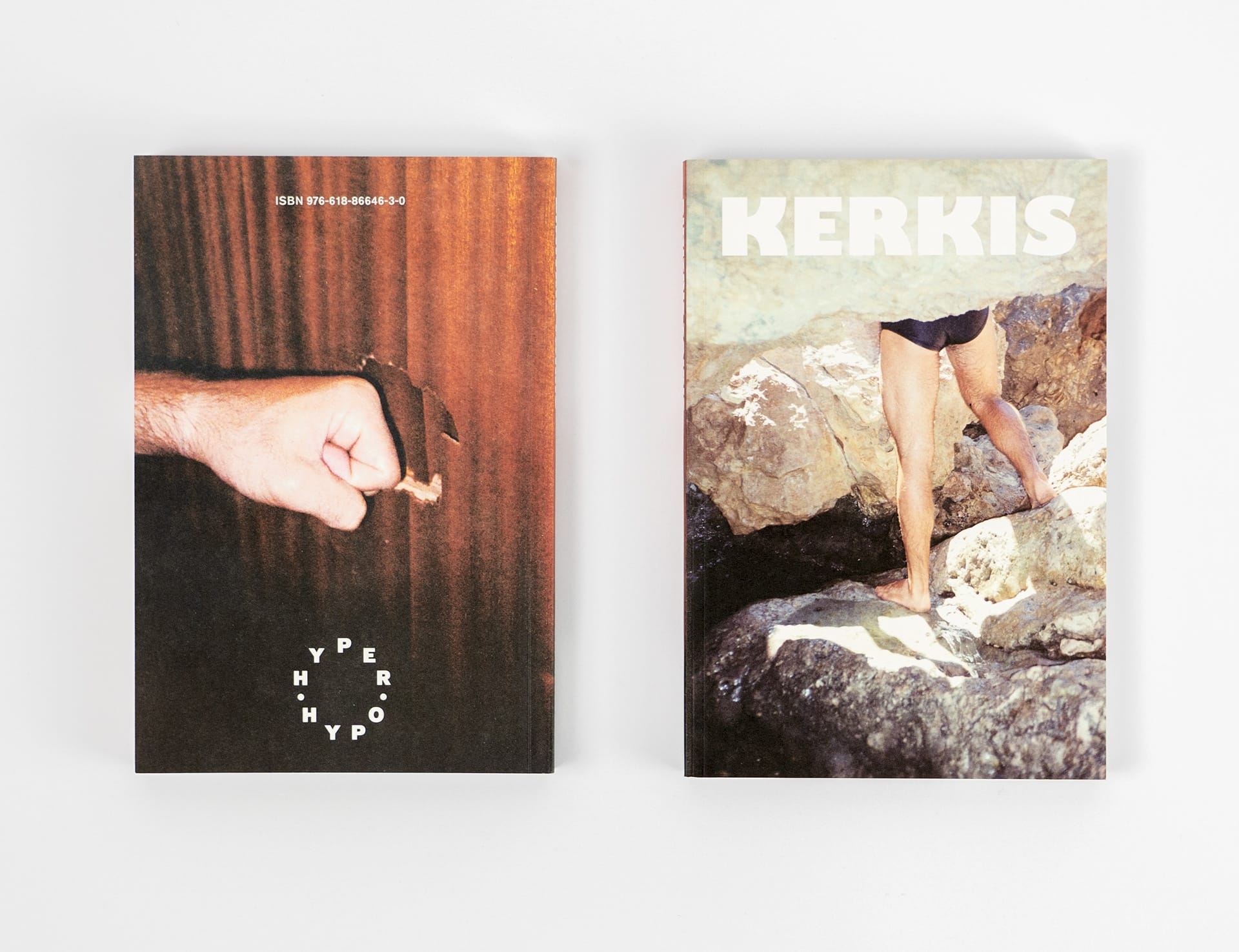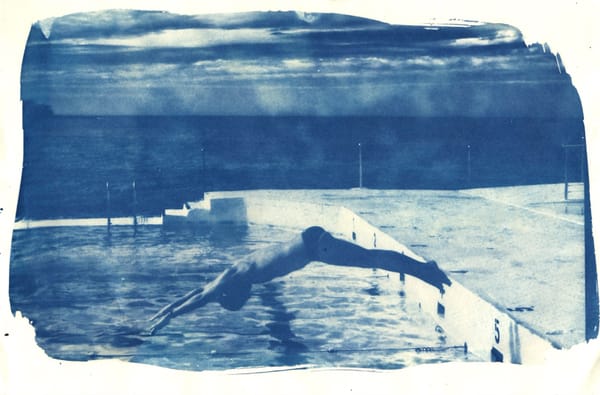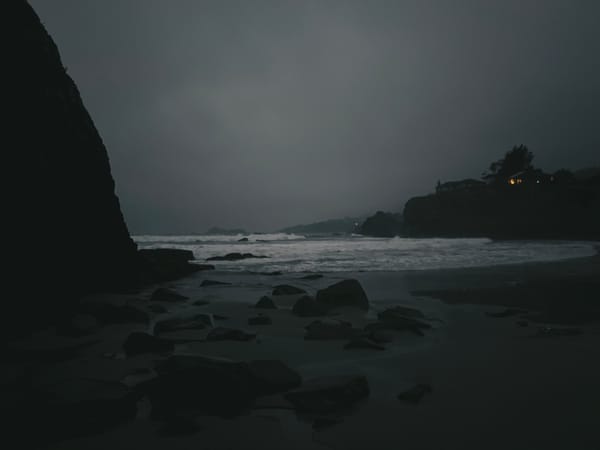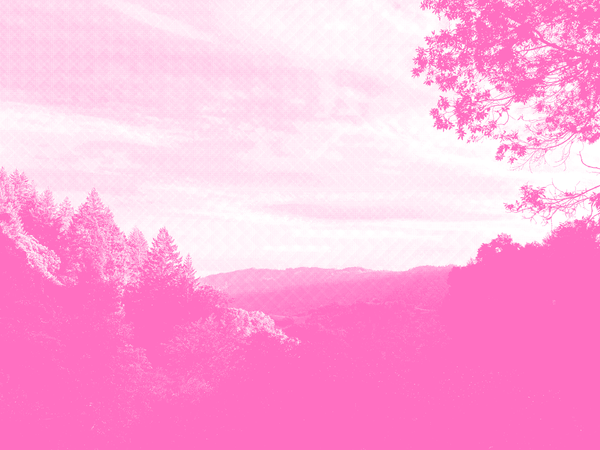“Print holds great importance – I want images to be tangible”
An interview with the photographer Dimitris Tairis about his book, "KERKIS".

Browsing in the bookstore Hyper Hypo while in Athens recently, I came across KERKIS, a book by the photographer Dimitris Tairis about a love affair unfolding over a summer on the Aegean island of Samos.
Over the span of 176 matte pages, Dimitris's photographs are interspersed with reproductions of notes he'd taken that summer (helpfully translated into English). In combination, the result is a vivid and melancholy evocation of a difficult and heady summer – a story that is both achingly nostalgic and punchily immediate (not unlike when you catch a whiff of a fragrance that reminds you of someone you loved long ago).
Dimitris kindly agreed to an interview about the book and about his photographic and publishing practice. Enjoy!

Xander Beattie: What makes film photography so special? What draws you to use this as a medium?
Dimitris Tairis: Film photography came into my life during the first year of my studies. I fell in love with it as a medium, and it suited me perfectly. It has the entire colour palette that I adore, and even the mistakes become beautiful once you learn how to control them. The whole process of shooting and then waiting to develop the photos makes it truly special. It was also a lesson from my school — to not be greedy with clicks. With film, you only have 36 shots, so you press the shutter only when you really mean it. Also, anything nostalgic attracts me deeply as a person.
XB: Why did you choose to manifest KERKIS as a printed, physical book?
DT: KERKIS began from my need to document the timeline of my relationship before my partner left for the summer season. It was a personal need to capture him before he left, because I believed that the distance would separate us. When I decided to follow him, I continued this visual documentation while living through something strange, difficult, and meaningful. That’s when I felt that what I was experiencing was not just something to record, but also something I wanted to share. From the very beginning on the island, I told my partner that I would turn it into a book. For me, print holds great importance – I want images to be tangible. Also I really love typography, the textures of paper, and books in general.
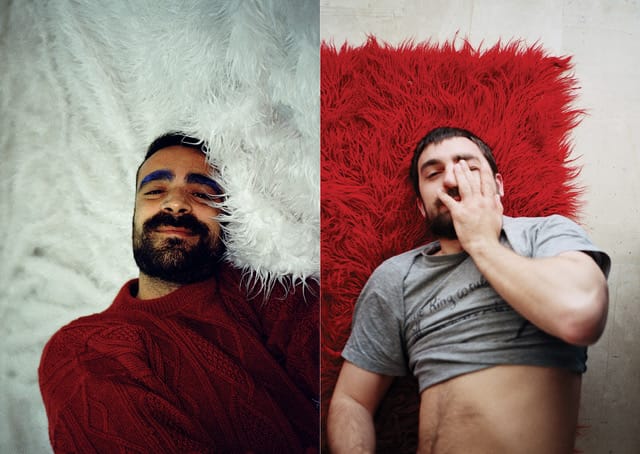
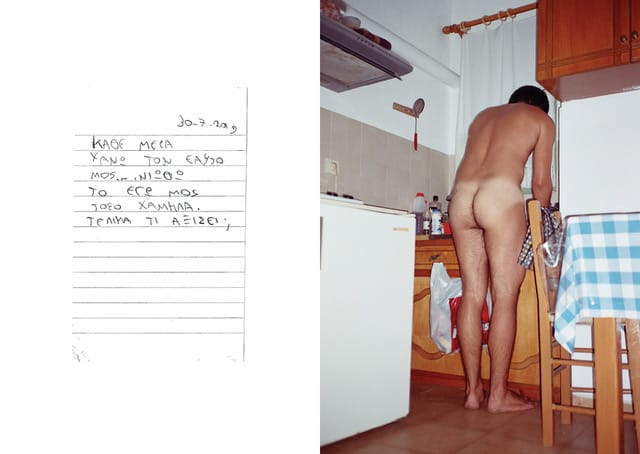
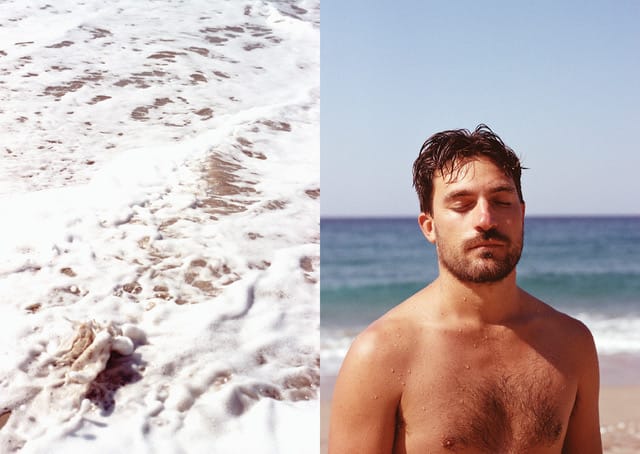
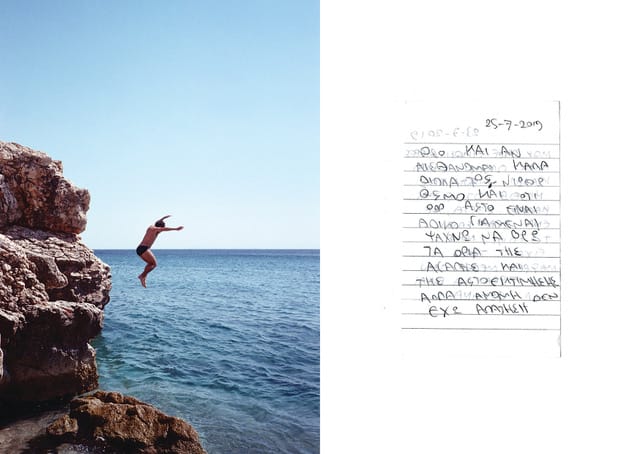
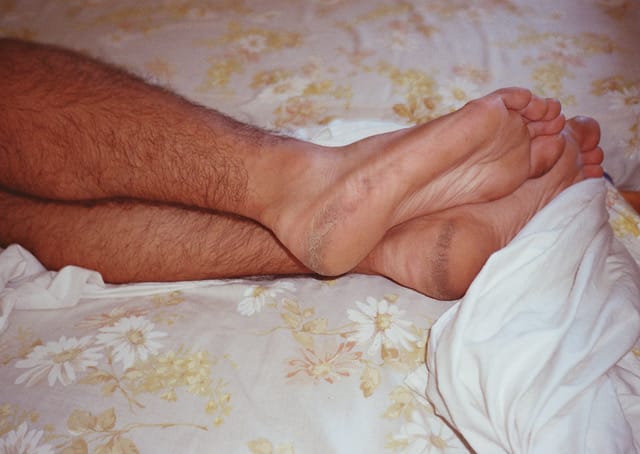
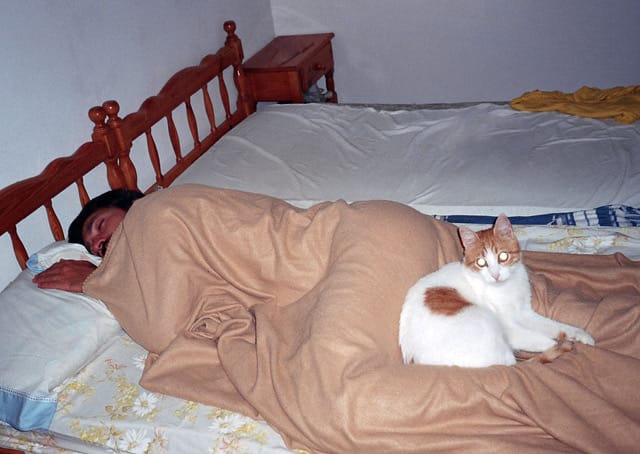
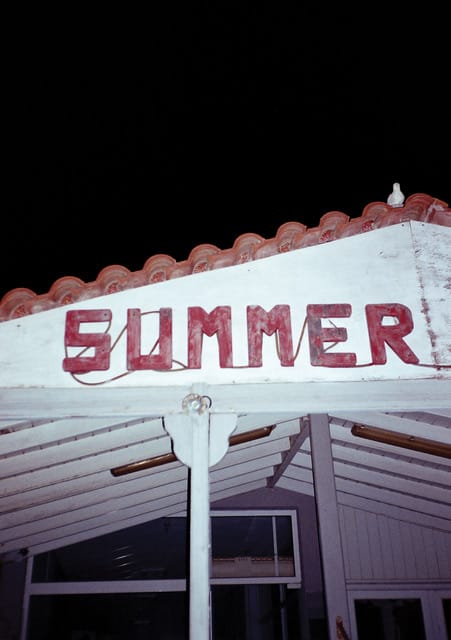
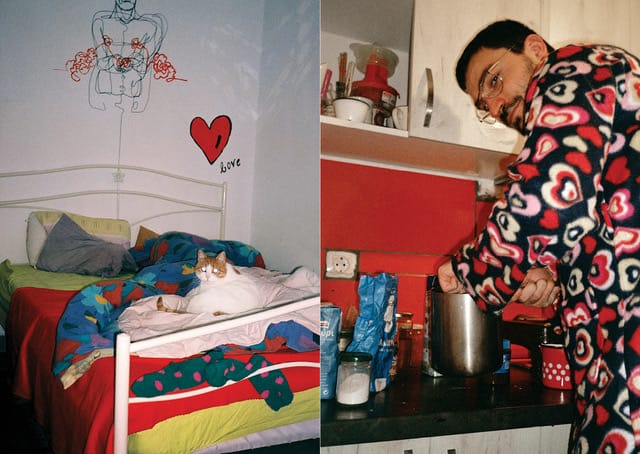
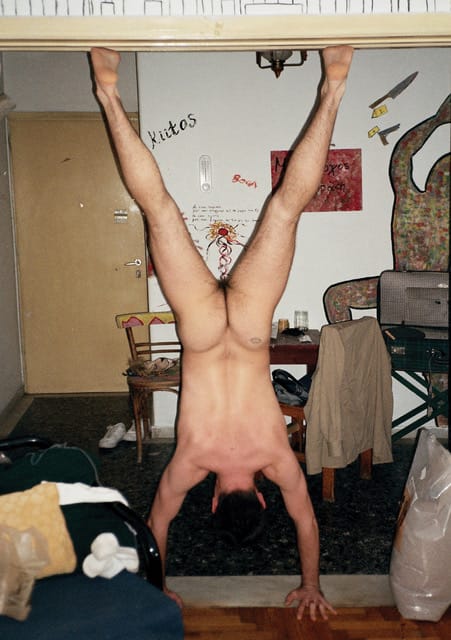
Dimitris Tairis's KERKIS takes us on a personal photographic journey of intimate everyday moments accompanied by hand-written notes which tell the story of the photographer’s relationship with another man during the summer and fall of 2019, while living together on the island of Samos.
XB: Describe the process involved in transforming this selection of images into a book with its own narrative arc?
DT: I think I already touched on that in the previous question, but to add to it — this book is narratively structured like a circle, a season, a spring that reaches autumn. It’s both a metaphorical and a literal journey. It follows the course of a relationship and the hard work it requires — a path that is both beautiful and difficult. The protagonists meet in Athens, then go to the island, and finally return to Athens, with an ending that remains ambiguous, allowing each person to imagine and feel it in their own way.
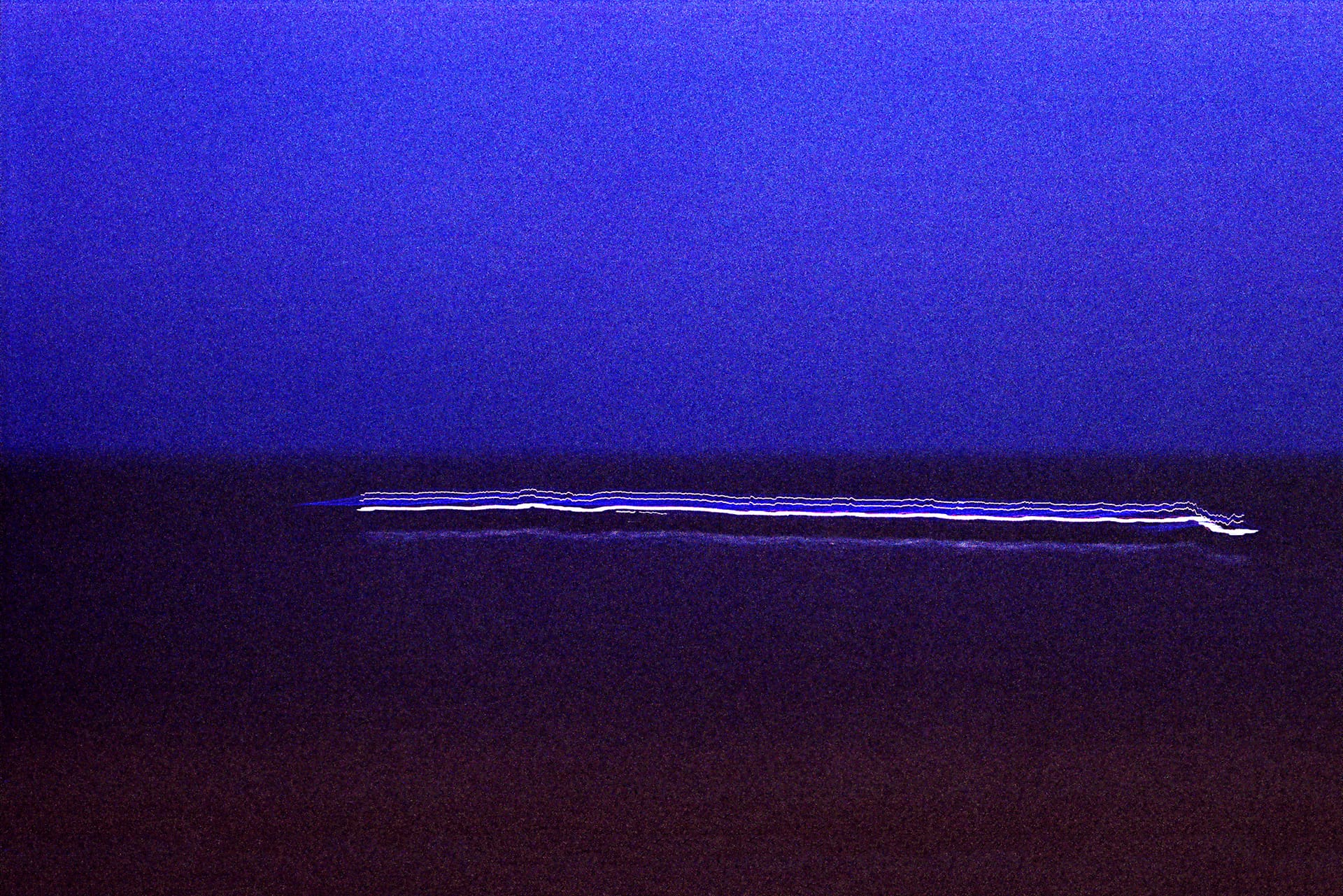
XB: What was the most challenging part of working on KERKIS? What was the most enjoyable?
DT: The most challenging part was creating something so personal in a way that it could also resonate with the viewer. In other words, taking such an intimate story and allowing someone else to identify with it, while at the same time trying to see something deeply personal to me with a clearer, more objective eye. The most pleasant part was, and still is, the element of memory, looking at the images and remembering stories I had forgotten. The entire project was made on film, so during the months I was on the island, everything existed only in notes. For example, I would write down what I photographed in order to build the narrative I wanted, and when we returned to Athens, I developed all 20 rolls of film together to see the results.
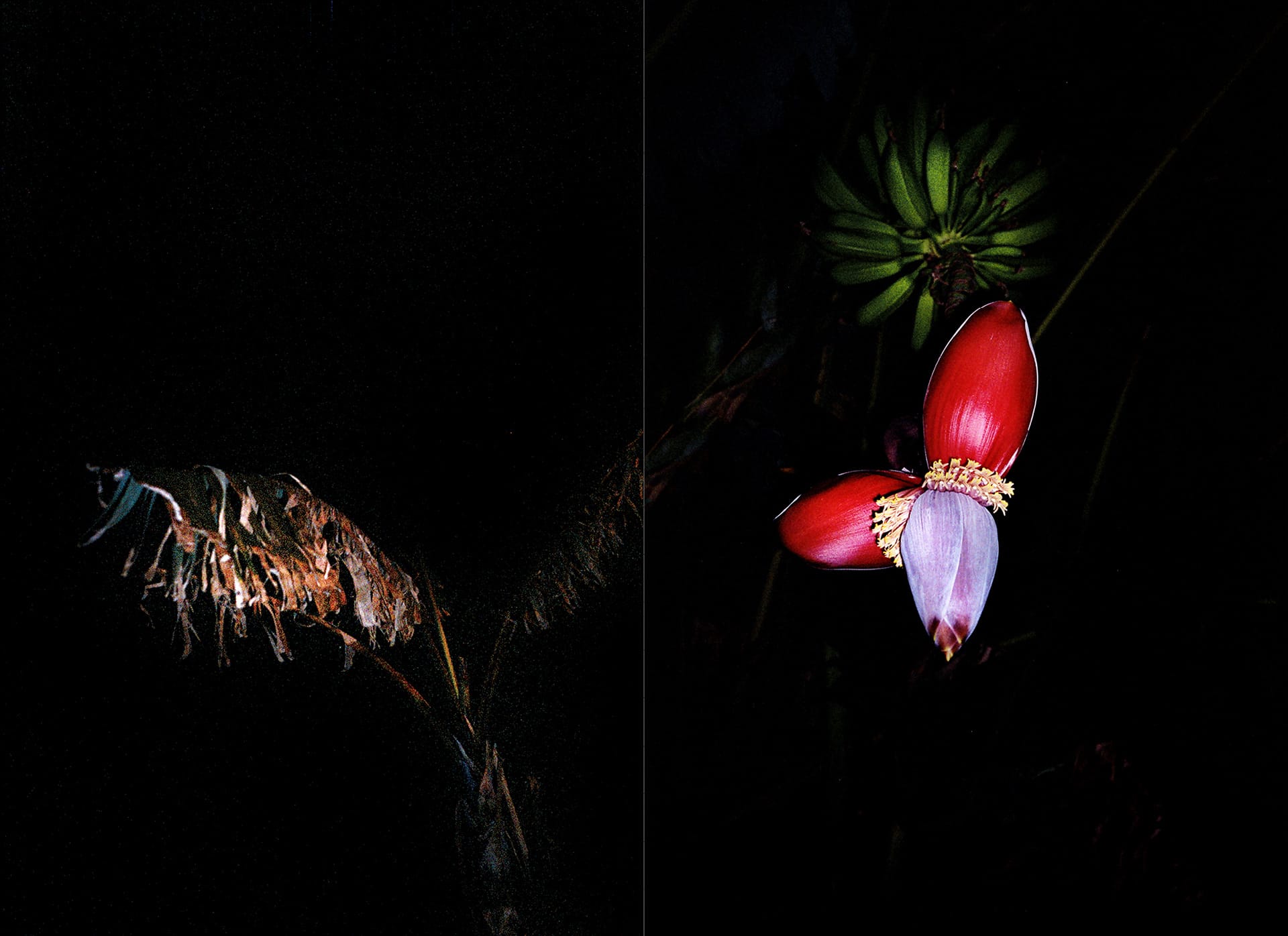
XB: Samos, the island depicted in KERKIS, appears as both a romantic idyll and an at-times intense and lonely place. Tell me more about its dichotomies, about the pleasures and painful moments it offered you that summer.
DT: Samos and the village where we stayed were at the foothills of Kerkis, the island’s mountain. I hated the village when I first arrived, and at the same time, I loved the view of the mountain I saw every day. Everything I felt is described more thoroughly in the personal notes I included in the book. If I were to fully answer this question, I think I’d end up writing two pages. Let’s just say it was a beautiful place, but I was in a very difficult psychological state, still lacking the necessary emotional tools as a person. I hurt my partner a lot and experienced some of the strangest fears and behaviours I’ve ever had. Yet within all of that, there were also many moments of beauty, relaxation, and love.
XB: How has that summer on Samos influenced who you are today (as photographer, storyteller and/or human)?
DT: That summer helped me a great deal. Photographically, I trained and worked very consistently on a project that was challenging because it was so personal, and I had never exposed myself so openly before. I believe the whole process matured me both as a photographer and as a storyteller. On a personal level, it helped me understand my mistakes and set me on a path of self-improvement, particularly regarding my behaviours in general, and even more so in relation to my partners after that relationship. After that summer, I began the process of seeing myself more clearly.
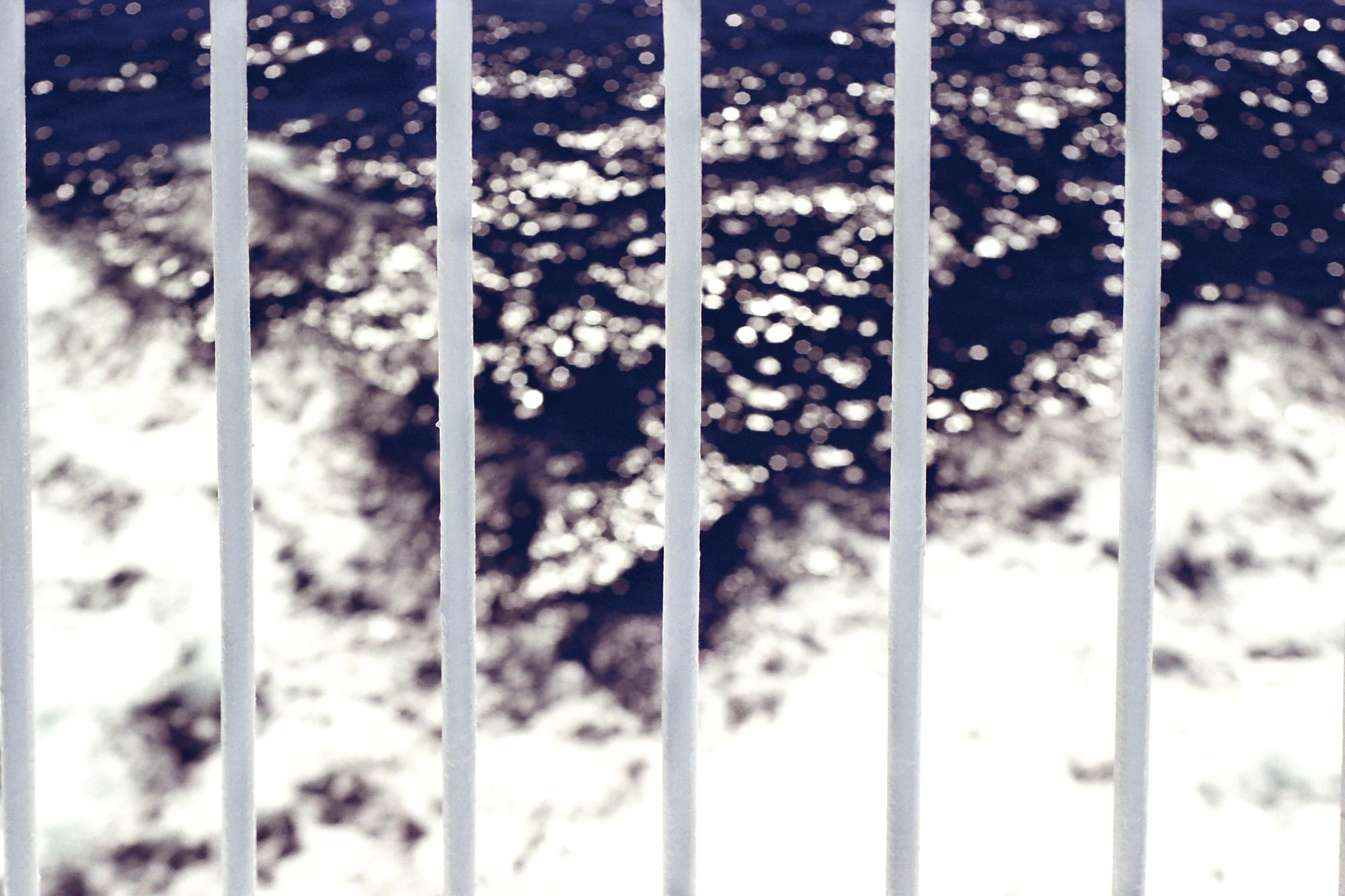
XB: How has/did the other man who appears in KERKIS reacted to appearing in a book that is so moving, intimate and personal?
DT: I knew from the beginning that I was documenting my partner, and from the start of my stay on the island, he knew that I was preparing this project to become a book. He was very supportive of it then, and later, when it was published, he gave me his full consent. Keep in mind that by the time it was released, we had broken up and our relationship was completely cold, yet I owe him great gratitude for allowing me to share our story. Throughout the process, he had no say, he maintained distance and respected the way I worked. He saw all the work once I had finished it. After the first presentation, when I mailed him a copy, he responded that it was a very beautiful work and a wonderful distillation of that summer.
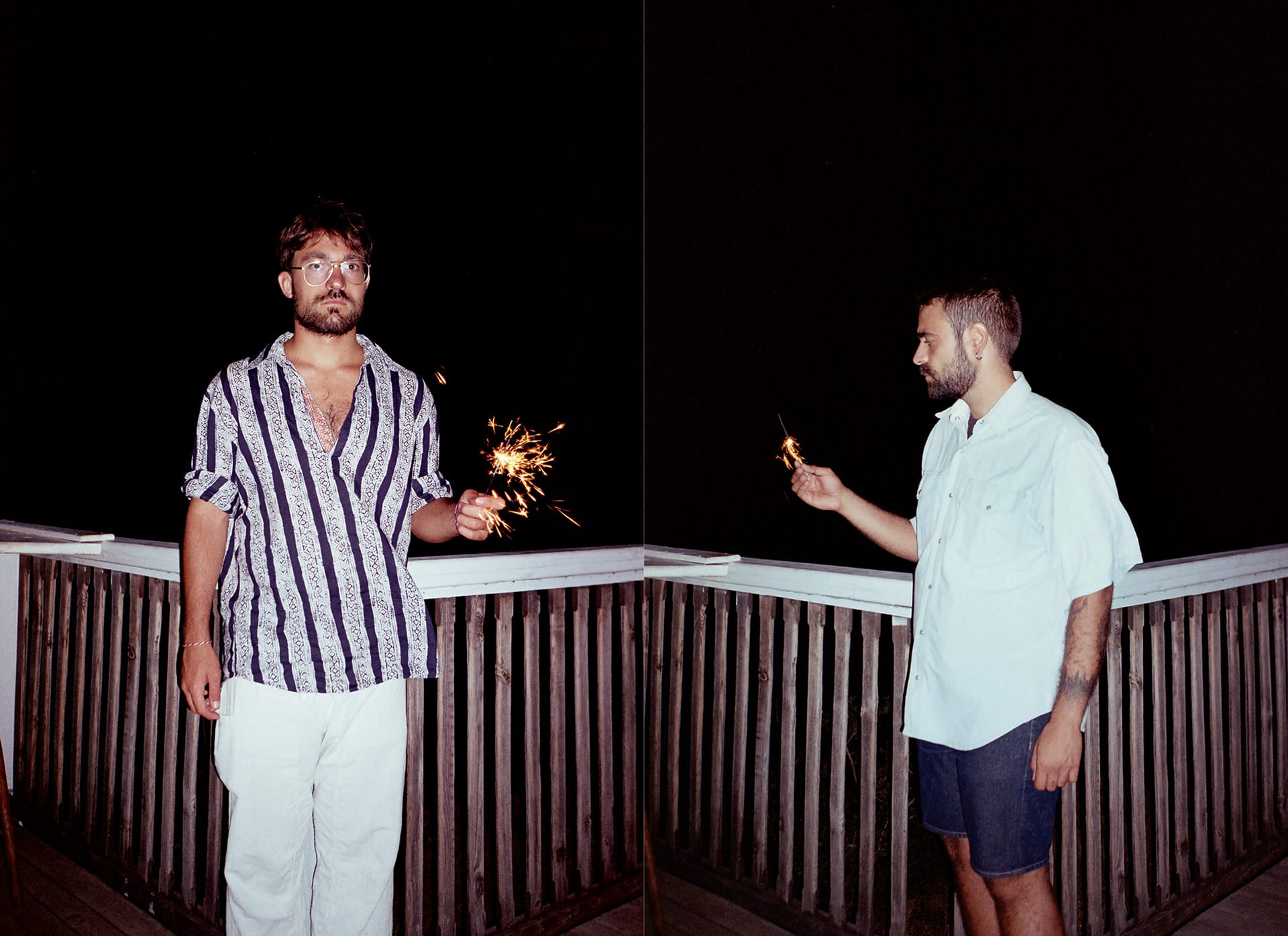
XB: You’ve also produced an audio version of KERKIS, produced with Hydrama. Tell me about this collaboration.
DT: This audio piece was created for an exhibition of the book that took place in Thessaloniki as part of the Love Unbound Festival. I was asked to select 20 photographs as a mini narrative from the book, which were then printed and displayed on the wall. To enhance the storytelling, together with my talented friend Hydrama, we composed an audio piece filled with sounds that transport the listener into the feeling and atmosphere of that summer. In the audio, I also read the notes that appear in the book; that was Hydrama’s idea, and it truly elevated the result, helping visitors immerse themselves in the book even without having it. Essentially, it was an exhibition of 20 photographs accompanied by the audio playing in a loop in the space. A collaboration I deeply loved, and a truly beautiful outcome overall.
XB: KERKIS is not your first book! You’ve also published The Urge. What lessons did you learn while working on your first photobook that you were able to apply when working on KERKIS?
DT: The two books are completely different from each other, different themes, different structure, different typographic process. What I learned is that I can create books without following any set formula, and that contemporary photobooks offer a huge range of possibilities for experimentation and creative exploration. In both books, I had a different approach and a different process for producing the photographic material, and what remained with me from both experiences was the valuable knowledge and insight to carry forward into future projects.
My first book was self-published, while the second one was published by Hyper Hypo, which was a really beautiful collaboration. With the first book, I was completely free to do whatever I wanted – and the same goes for KERKIS, except for the cover and the typeface, where we had a few disagreements. But we eventually reached this final result, and I’m really glad we did, because without that collaboration, I would have never made those choices – and, in the end, I loved them.
The first book travelled quite a bit while I was promoting it on my own, whereas KERKIS is now being sold in New York and Tokyo through Hyper Hypo’s distribution. Two different experiences, both equally wonderful.

XB: Tell me about your photographic and publishing inspirations.
DT: My inspiration in every project I do and will continue to do, comes from my existential questions and concerns. I can’t say that I’ve ever had a specific person who served as my main inspiration, apart from one of my teachers at photography school, who I believe is the reason I fell in love with storytelling and the photobook as a form. I truly feel that this woman shaped me as a photographer, as a storyteller, and as a person. And even though I learned to work in her way, the outcome of my work is very different from hers. She often disagrees with what I do, even though I approach things using the method she taught me. Isn’t that fascinating?
XB: What are you working on next?
DT: The next project I’m working on is something I’ve been developing over the past eight years. Its theme revolves around my greatest existential question: what is home — and what does familiarity truly mean? What is it that we search for when we leave our parents’ house, and do we ever truly belong somewhere? It’s an existential exploration of home, place, time, and human connection. Its subject matter will be deeply human-centred, and I want it to be the most ambitious project I’ve ever done one that gives equal weight to emotional depth and photographic precision. I like to believe that by 2026 it will be ready, and that we’ll be talking about its upcoming publication.
- Dimitris Tairis's KERKIS is published by Hyper Hypo. You can follow him on Insta and explore his portfolio.
